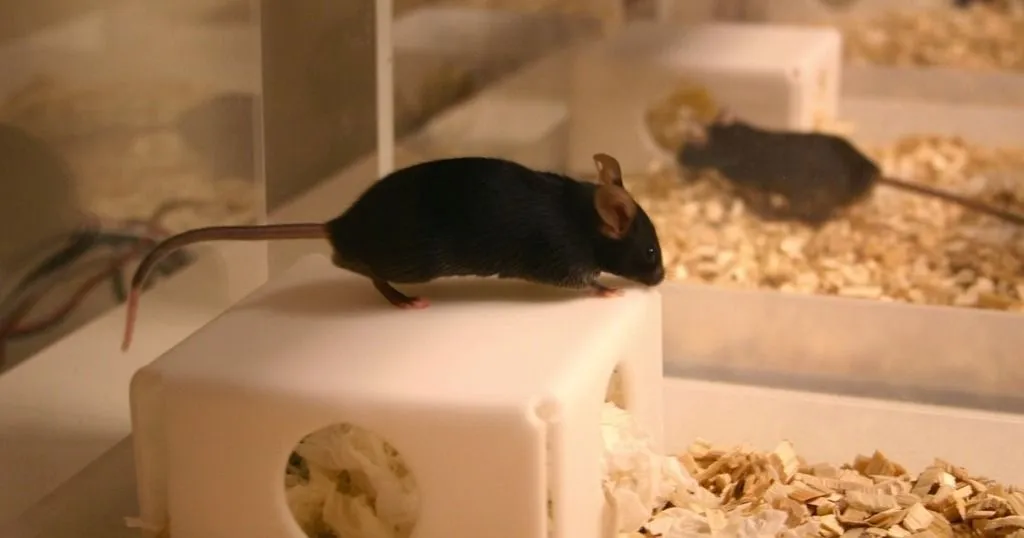Non-invasive home cage testing of epilepsy in mice
Epilepsy is more than seizures; behavioral changes that occur in between seizures are rarely assessed. A new home cage study from the Baylor College of Medicine aims to change this.
Posted by
Published on
Fri 13 Mar. 2020
Topics
| EthoVision XT | Home Cage | PhenoTyper | Seizure Behavior | Video Tracking | Epilepsy |

Epilepsy is a very common chronic neurological disorder, affecting people at all ages, all over the world. Although it can be successfully treated, treatment doesn’t work for everyone, so research on epilepsy remains important.
Epilepsy disability
The burden of unpredictable seizures is not the only debilitating factor of epilepsy. The severity of seizures and the acute medical complications make up the so-called ictal component of epilepsy. There is also an interictal component to this disease, such that patients with epilepsy suffer from high rates of depression, anxiety, autism and other mental health disorders. The determinants of interictal behavior are largely unknown.
Home cage study of epilepsy
A recent study from the Baylor College of Medicine (Houston, TX) aimed to change this. Jankovic, Kapadia, and Krishnan performed a quite elaborate home cage study to measure both the ictal and interictal severity of epilepsy. They described the daily behavioral patterns of three mouse models of epilepsy, with complete automation. No human interference, no surgical implants.
Data integration
The study was based on PhenoTyper home cages with cameras for video tracking with EthoVision XT. They were equipped with infrared-lucent shelters, Lickometers to measure drinking, Feeding Monitors, and a running wheel. Data from these devices was brought into EthoVision XT and used to complement video tracking data.
Alternatives to EEG testing
The gold standard to detect seizures is an invasive procedure involving surgically implanted EEG electrodes. Jankovic and her colleagues choose a different approach (integrated visualization), measuring the seizure severity by screening all spikes in mobility from the video tracking data and confirming true convulsive seizures.
How to measure the interictal severity of epilepsy
To assess the interictal component of the seizures, the researchers used kinematic and behavioral parameters from both the video tracking data and devices, monitoring feeding, drinking, distances, and sheltering. They also did additional testing with a light spot and cage swap.
PTZ model of epilepsy
In line with other epilepsy studies, researchers used PTZ (Pentylenetetrazole) injections to evoke seizures in mice. After two days of baseline recordings in PhenoTyper home cages, mice were subjected to 10 daily PTZ injections or saline as a control group. They measured the acute effects of the injections in the first 90 minutes, interictal effects were measured in the following 19 hours.
Effects of PTZ on wild-type mice
The first tests were done with a commonly used wild-type strain (C57BL/6J). Here, relative to saline, PTZ injections caused profound hypoactivity in the first half hour, followed by relative hyperactivity in the next hour. During that time, mice also displayed a significant sheltering deficit. Therefore these researchers hypothesize that immobility outside the shelter may represent a objectively measurable behavioral correlate of the severity of a first time seizure. These behavioral effects improved over subsequent injections of PTZ, but so did the likelihood of convulsions.
Seizure severity and behavioral effects
Interestingly, the severity of the seizures also correlated with different behavioral effects: convulsive seizures resulted in an early activity spike, while non-convulsive (milder) seizures seemed to be associated with a more sustained sheltering deficit and relative increase exploratory activity.
PTZ and seizure-susceptible mice
Next, researchers were curious about the effects of PTZ on the DBA/2J strain, mice that are known to be more susceptible to seizures. Indeed, they convulsed sooner and more severely after PTZ injections. But even prior to PTZ injections, they were also less active and had different feeding and sleeping patterns.
Testing Dravet mice
Finally, a mouse model for Dravet syndrome (Scn1a+/-) underwent home-cage testing. This neurodevelopmental disorder is characterized by intellectual disability, autism spectrum disorder, and epilepsy.
Compared to their wild-type littermates, these mice showed early hypoactivity, without alternations in feeding and sheltering. Showing similarities with PTZ-treated mice, Dravet mice spent more time sheltering at the cost of reduced feeding. They also slept more and in longer bouts.
Unique epilepsy study
What’s interesting about this study is that it uses home-cage testing to identify aspects of epilepsy disability in mouse models across both ictal and interictal domains. It also shows that both ictal and interictal effects differ for different strains of mice. We already knew that repeated injections of PTZ make mice more susceptible to convulsions. This study shows that changes in behavioral severity are more complex and may reflect a habituation to PTZ. By identifying similarly altered patterns of home-cage behavior across three different models of generalized epilepsies, these data lend to further studies that compare these behavioral themes with focal and/or other genetic models of epilepsy.
References
Jankovic, M.J.; Kapadia, P.P.; Krishnan, V. (2019) Home-cage monitoring ascertains signatures of ictal and interictal behavior in mouse models of generalized seizures. PLOS ONE, e0224856.
Header Photo by Levi Guzman on Unsplash
Related Posts
Video-tracking the effect of influenza infection on ferrets
Video tracking and a bug repellant stronger than DEET


